Blogger’s Note: This is a continued series highlighting the history and activities of USS Bremerton SSN 698, her alumni, and the Silent Service.
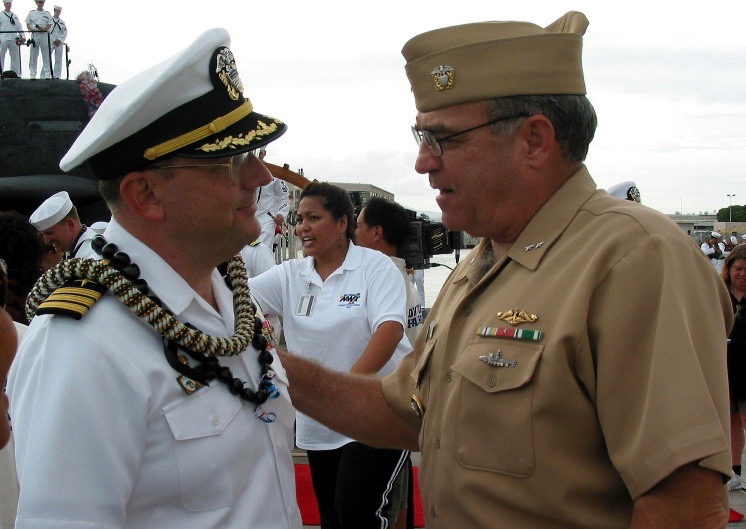
Commander Chuck Merkel is greeted at the pier by COMSUBPAC Rear Admiral John Pagett when USS Key West returned from her combat patrol in 2003 (image source: Chuck Merkel).
Prepared for the Fight
With the anniversary of 9/11 recently in our memory, I want to turn your attention to the how the submarine force was called to respond to the attacks upon the United States. Before we cover the first hand accounts given by the former Commanding Officer of the USS Key West, let us go over the critical path that leads to successful submarine operations.
When the public reads news reports about the successes achieved by the U.S. Navy, they rarely stop to consider the enormous personal investment in preparation, training, accrued mission experience, and sacrifice made by the professional sailors who have served on nuclear powered submarines.
Making the complex look easy takes mastery and mastery never comes easy.
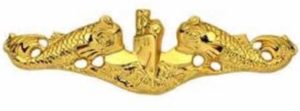
Leadership: Submarine Officer Development
In the Silent Service are naval officers who form a highly trained and experienced corps of professionals, some rise to the exalted position of Commanding Officer of a nuclear powered Navy submarine, which are among the most if not the most sophisticated and technically advanced manned weapon system in the military.
With the responsibility of command comes leadership over approximately 130 officers and crew with the ultimate responsibility ship operations and safety. They are also expected to confidently and aggressively execute in multi-mission environments: gathering intelligence, deploying clandestine forces and/or deterring or terminating threats to the interests of the United States.
Readiness training is conducted with intensity and the system of developing officers into command quality leaders is as structured as it is effective.
Ever since the beginning of the nuclear powered Navy, the officer training and the accrual of the essential experience takes serious career commitment. It may take approximately 20 years before qualified candidates can become prospective commanding officers. In the nuclear-powered Navy and in the submarine force, the standards have always been high, but through the dedication of officers and their willingness to endure the extreme life of operating under the sea, we have the finest submarine officers in the world.
The capabilities of our submarine officers and crews grow with the changing mission of the Silent Service.
The Roles of Attack Submarines Changing
The “Cold War” period between the end of World War II and the Berlin Wall coming down in 1989, found the use of US Navy submarines as offensive weapons limited. The Cold War role of submarines was largely about deterrence, intelligence gathering, and carrier group escort. The use of submarines as a strike force was limited since we have avoided the World War III doomsday scenario which requires unleashing ICBM’s (Intercontinental Ballistic Missiles) from SSBN’s (Submarine Ballistic Missile- Nuclear) and have also avoided a conventional war of attrition, like World War II, requiring the destruction of enemy shipping on an at-will basis via the use of torpedoes and anti-ship missiles.
Since 1990, the role of the fast-attack sub has been growing in the area of offensive capability largely due to the incorporation of Tomahawk cruise missiles which give every attack submarine substantial offensive strike capabilities. A submarine’s ability to be positioned without detection opens up many strategic and tactical possibilities not possible with her surface warfare counterparts.
At the forefront of war in the 21st Century is where we find one of our 698 Alumni.

Profile: Captain Charles “Chuck” Merkel, U.S. Navy (retired)
One of our USS Bremerton SSN 698 Alumni is Captain Charles Merkel whose career path led him to his assignment to the USS Key West SSN 722 as the Commanding Officer (CO). His first seagoing tour was on USS Bremerton under the leadership of CO’s Douglas S. Wright and Alan R. Beam.
The following outline of Merkel’s career path includes rotations between sea and shore duty. The extensive program reflects the depth and progression of officer experience and training, operational readiness, and leadership.
Combat Systems Officer, USS BREMERTON (SSN 698): 1984 – 1987
Shift Engineer and Staff Training Officer, S5G Prototype, Nuclear Power Training Unit Idaho Falls, Idaho: 1987 – 1989
Navigator and Operations Officer, USS OMAHA (SSN 692): 1990 – 1993
Tactical Readiness Evaluation Team Member, Commander Submarine Force U. S. Pacific Fleet: 1993 – 1995
Executive Officer, USS TUNNY (SSN 682): 1995 – 1997
Enlisted Program Manager, Director Naval Nuclear Propulsion Program: 1997 – 1999
Commanding Officer, USS KEY WEST (SSN 722): 2000 – 2003
Deputy Commander, Submarine Squadron SEVEN: 2003 – 2005
Commanding Officer, Naval Submarine Training Center Pacfic: 2005 – 2007
Commander, Cruise Missile Support Activity Pacific: 2007 – 2010
Director for Maintenance and Material Readiness, Commander Submarine Forces U. S. Pacific Fleet: 2010 – 2012
Insight to an Officer’s First Sea Duty Assignment
From my viewpoint of the enlisted man I was 30 years ago, I want to offer a novice a sense of the challenge it is for an aspiring young officer when he reports to his first Navy submarine, like when Mr. Merkel arrived onboard our boat, USS Bremerton, in 1984.
There is hardly a more challenging and ideal environment for a break in period than a Navy attack submarine, especially one like Bremerton. A new kid on the block at the time, she was a hot-running boat, meaning lots of underway time at often unpredictable intervals. Under the command of a very aggressive Captain, the Bremerton had recently chalked up some important successes and enjoyed a good reputation.
There is pressure to become Qualified. If you are not Qualified, for all practical purposes, you are viewed as less than a full person (to put it nicely). Yes, you’ve picked this job and you have a vision of achieving your goals: working as a team, proving your newly learned skills, building the trust to handle any number of practical jokes being played upon you, and training intensely to stand an effective watch (shipboard duty station) and to be another reliable set of arms and legs that can help contain any number of emergency situations – situations that could easily lead to a sudden and traumatic ending to a submarine and crew.
It is the nature of submarine crews that social boundaries are less noticeable, the working conditions far more professionally intimate, even with regards to the Captain, than the dogmatic protocol of the more ‘conventional’ surface fleet may expect. This is one of the beauties of the life onboard a submarine – the close bonds that result from serving together. On the other hand, the close working conditions also allow each person to fall under the scrutiny of pretty much everyone onboard.
Being the military, there is a still clear delineation between officers and enlisted, it’s part of the job, yet an officer’s ability to make the connection with the lowest non-qual seaman to the Master Chief (the senior ranking enlisted man) plays a valuable role in how he is accepted and respected as a leader. This is all an integral but qualitative aspect of the in-depth ship’s systems and watch standing qualifications required to earn the Submarine Dolphins.
With all these few ideas said, I am very pleased to report, Mr. Merkel proved himself to be the kind of officer who was both competent and respected by all in the crew. He is one of the good guys.

Area of Operations
THE MOMENT OF TRUTH – WHEN IT ALL PAYS OFF
During his tour aboard USS Key West, from 2000-2003, Cmdr. Merkel and his crew found themselves in an immediately deployable forward position as the US military began conducting offensive actions in response to the attacks on 9/11. Key West became the first submarine to conduct a war patrol of the 21st Century.
With great pride, respect and admiration for our shipmate and leader, I wanted to present a couple of articles, one from the Honolulu Star Bulletin and the other from News.Navy.Mil. They will help give you an overview of events involving a modern attack submarine and her crew when they are called to do their duty when the nation is at the precipice.
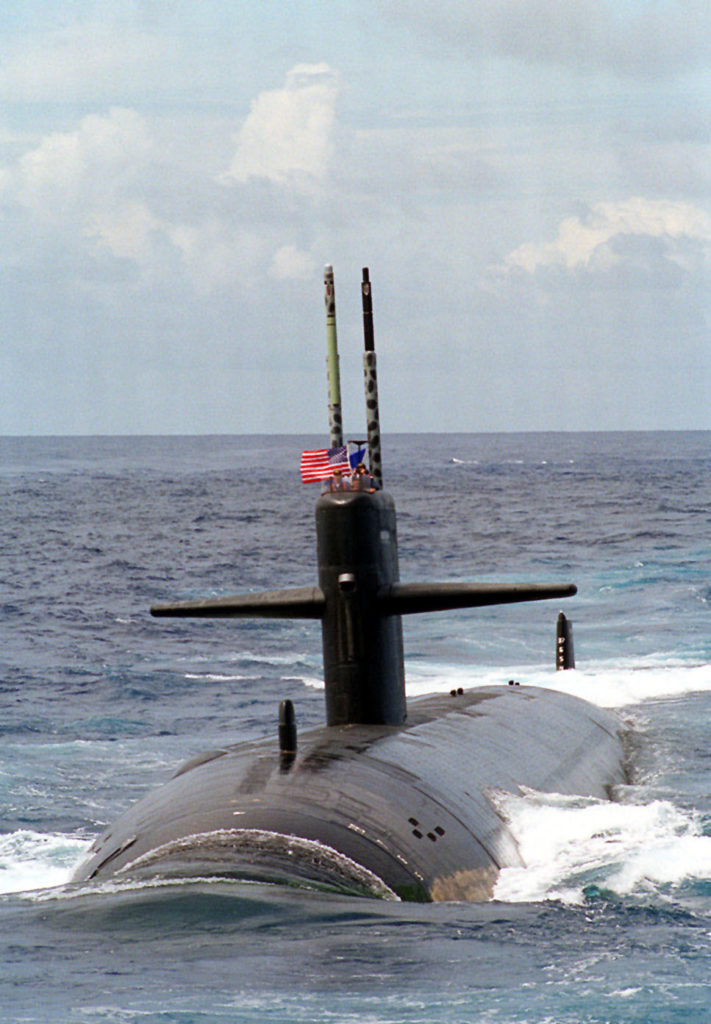
970414-N-4126O-002
Pacific Ocean (Apr. 14, 1997). . . .The nuclear powered Los Angeles class submarine USS Key West (SSN 722) conducts surface operations. The boat is part of the aircraft carrier USS Constellation (CV 64) battle group enroute to the Arabian Gulf to enforce no-fly zones and monitor shipping to and from the region. U.S. Navy photo by PhotographerÕs Mate 3rd Class James W. Olive (RELEASED)
SUNDAY, OCTOBER 13, 2002
Merkel Speaks on Afghanistan and Iraq
AFGHANISTAN VETS READY TO TAKE THEIR SUBMARINE TO IRAQ
The USS Key West participated in the 21st century’s first submarine war patrol as the first submarine in the North Arabian Gulf a day after the September 11, 2001, attacks.
gkakesako@starbulletin.com
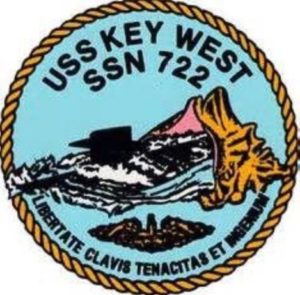 |
Now, with the possibility of another war patrol on the horizon, Cmdr. Charles Merkel, a 22-year Navy veteran, says he will do whatever is necessary if his nuclear attack submarine, USS Key West, is called into battle against Iraq.
“This is my job, to do what is required of me,” said Merkel, whose 360-foot submarine was the first in the North Arabian Gulf a day after the Sept. 11, 2001, attacks, ready to fire any of its more than two dozen Tomahawk missiles at targets in Afghanistan.
Like its sister sub, the Connecticut-based USS Providence, the Key West was diverted to the North Arabian Sea minutes after the two planes crashed into the twin towers of New York’s World Trade Center.
“More than anything, I feel lucky to have been able to be in that position at that time,” Merkel said.
It was just after supper on Sept. 11, 2001, when the Key West came periscope depth in the Indian Ocean. The Key West had left Singapore Sept. 5 and at that point was headed to Bahrain for a liberty call.
Only its antenna broke the surface of the ocean to pull in its latest batch of satellite messages. Four of the messages were flagged with a special alert. Immediately, the radioman on watch called Merkel on a special intercom in his stateroom summarizing the dispatches.
“Basically, the messages said that the attacks occurred, and they gave me immediate direction on what we had to do,” said Merkel, who, like the rest of the 130 sailors aboard the Key West, had never been on a combat patrol.
Merkel, 42, immediately left his stateroom and went to the radio room to establish a voice communication with the 5th Fleet and the carrier USS Carl Vinson battle group.
“We were told to leave communication depth and make best speed to the North Arabian Sea,” Merkel said.
As the smoky-gray Key West dived deep in the Indian Ocean, Merkel made preparations to begin the 21st century’s first submarine war patrol. He also went on the sub’s intercom to let the crew know what was happening.
“The submarine is a small place,” said Merkel, who had been in command of the Key West for only 10 months. “There aren’t many secrets aboard a sub, and the crew knew something had happened. I told them two planes had flown into the World Trade Center and there had been an explosion at the Pentagon.
“I told them everything I knew.”

|
Four of the Key West sailors were from New York City.
“Right away, I sent a message requesting information on their families,” Merkel said. “It took about a week to track them down and to find out that no one was hurt.”
Merkel said: “At first, it was hard to believe or accept what had happened. But the bottom line was that you had to believe that it was our job to do what our nation required us to do.”
For the Key West, that meant it was to be on the front line, armed and ready to strike. Within a day the Key West was “on station” — the first ship with the potential to deliver any of its Tomahawk missiles to targets in Afghanistan more than 300 miles inland.
“As we moved into position, I kept in communication with my battle group (USS Carl Vinson) and the 5th Fleet,” Merkel said.
When orders for a strike finally came in October, Merkel believed his crew was ready.
He described the first launch on Oct. 26 as “no different than firing a torpedo.”
“You can hear the air valves cycling, and your ears can feel the change,” Merkel said.
“Then there is a whoosh” as the boosters of the Tomahawk are ignited, he said. But if the 6,900-ton sub moved at that moment, Merkel did not feel anything, he said.
“You can hear the roar of the engines through the ship’s sonar system, but nothing else,” he said.
Merkel cannot say how many Tomahawks the Key West fired or the types of targets it was ordered to take out.
When asked if his missiles hit all of its targets, Merkel answered in matter-of-fact manner.
“Yes, it was successful. … We met all our taskings,” he said.
“It was just like all the exercises we had trained for,” Merkel added. “We make these exercises intensive. … It was just like a training exercise. Obviously, this time it was for real.”
The Key West left the 5th Fleet’s area just before Thanksgiving, returning to Pearl Harbor on Dec. 15.
It now sits in Pearl Harbor, preparing for another deployment and the possibility of firing missiles at Iraq sometime next year.
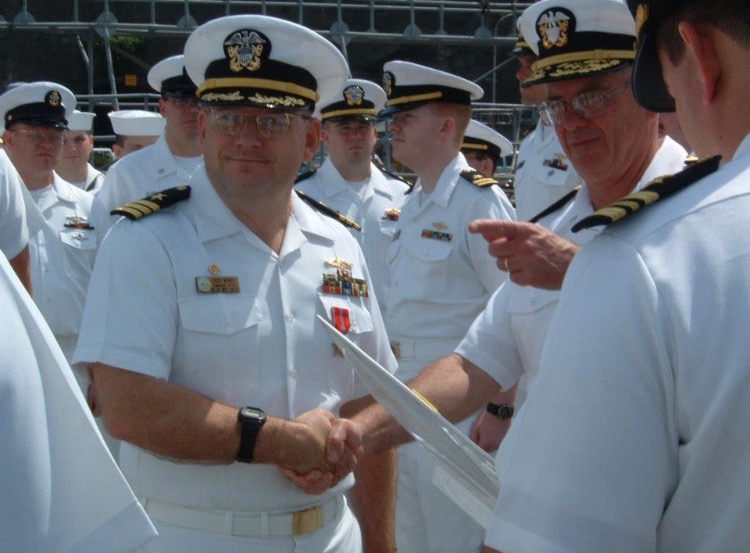
Skipper of the USS KEY WEST receiving a Bronze Star for the boat’s actions during OIF. Rear Admiral Enright (at the right, pointing) presenting (image source John McClure/Chuck Merkel).
USS KEY WEST SKIPPER MAKES HISTORY
PEARL HARBOR, Hawaii (NNS) — History is currently being made underwater, as for the first time since World War II, a submarine commanding officer is in the process of leading his crew through two consecutive combat deployments.
Cmdr. Chuck Merkel departed Pearl Harbor with his attack submarine, USS Key West (SSN 722), Jan. 24 for a six-month deployment in support of the global war on terrorism.
“I feel ready and confident to take the crew and the ship on this deployment,” Merkel said. “Again, we are fully ready to answer the nation’s call and any taskings that may be asked of us.”
During his last six-month deployment, the crew was on their way to a liberty port in Bahrain when they were notified of the Sept. 11 attacks. The submarine was immediately diverted to the North Arabian Sea.
“Our last deployment really shows why we have a Navy and a submarine force,” Merkel said. “We transitioned from a 10-day transit to a 10-week war patrol. We answered every call, and we were ready to complete everything we were tasked to do.”
In fact, Key West was the first U.S. warship to be on station and within Tomahawk strike-missile range following the attacks.
Today, Key West is one of the 30 coalition warships assigned to Naval Forces Central Command and is actively participating in Tomahawk Land Attack Missile Operations to disarm Iraq. Targets include command and control facilities, early-warning radar sites and surface-to-surface missile systems.
“I feel that my previous deployments have certainly prepared me as commanding officer for what lies ahead, and I couldn’t be more proud to lead USS Key West on deployment again to answer the nation’s call,” Merkel said.
According to Merkel, the crew is the key ingredient to a successful deployment.
“These are magnificent ships, and the crew is the true treasure. Each one of them makes Key West complete. Their skills, their compassion and their unique interests combine, adding to the overall strength of USS Key West.”
Key West is armed with the most sophisticated Mark-48 anti-submarine torpedoes and Tomahawk missiles. The submarine carries a crew of 130 men and is attached to Submarine Squadron 3.
For related news, visit the Navy NewsStand online at www.news.navy.mil.
*****
……
Blog Note: Currently Captain Merkel is serving as the Executive Director at Pacific Fleet Submarine Memorial Association, Pearl Harbor, Hawaii.
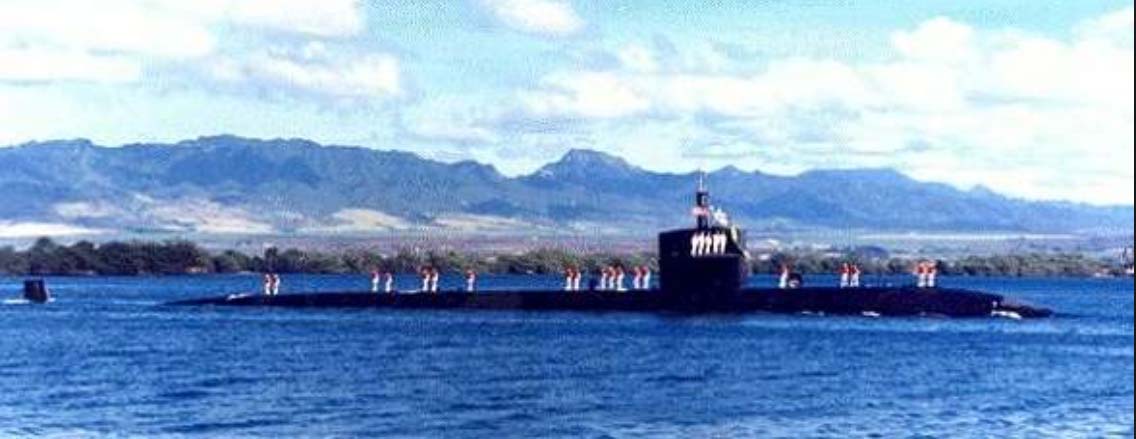
“Aloha” Bremerton, coming back into Pearl Harbor, Hawaii.
LOOKING FORWARD
USS Bremerton SSN 698, the longest serving commissioned submarine in the United States Navy, is home ported in Pearl Harbor, Hawaii, and is tentatively scheduled for decommissioning in 2019.
SAVE THE 698
Join the Movement! Are you passionate about preserving the USS Bremerton in any way shape or form after her decommissioning for the benefit of the public and of naval history? You are invited to a new closed group forum on Facebook “SaveThe698” to be involved in public discussion related to Saving 698. You can see the group site by clicking HERE.
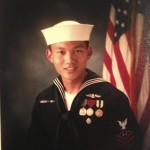
STS1/SS(DV) C.K. Yee
